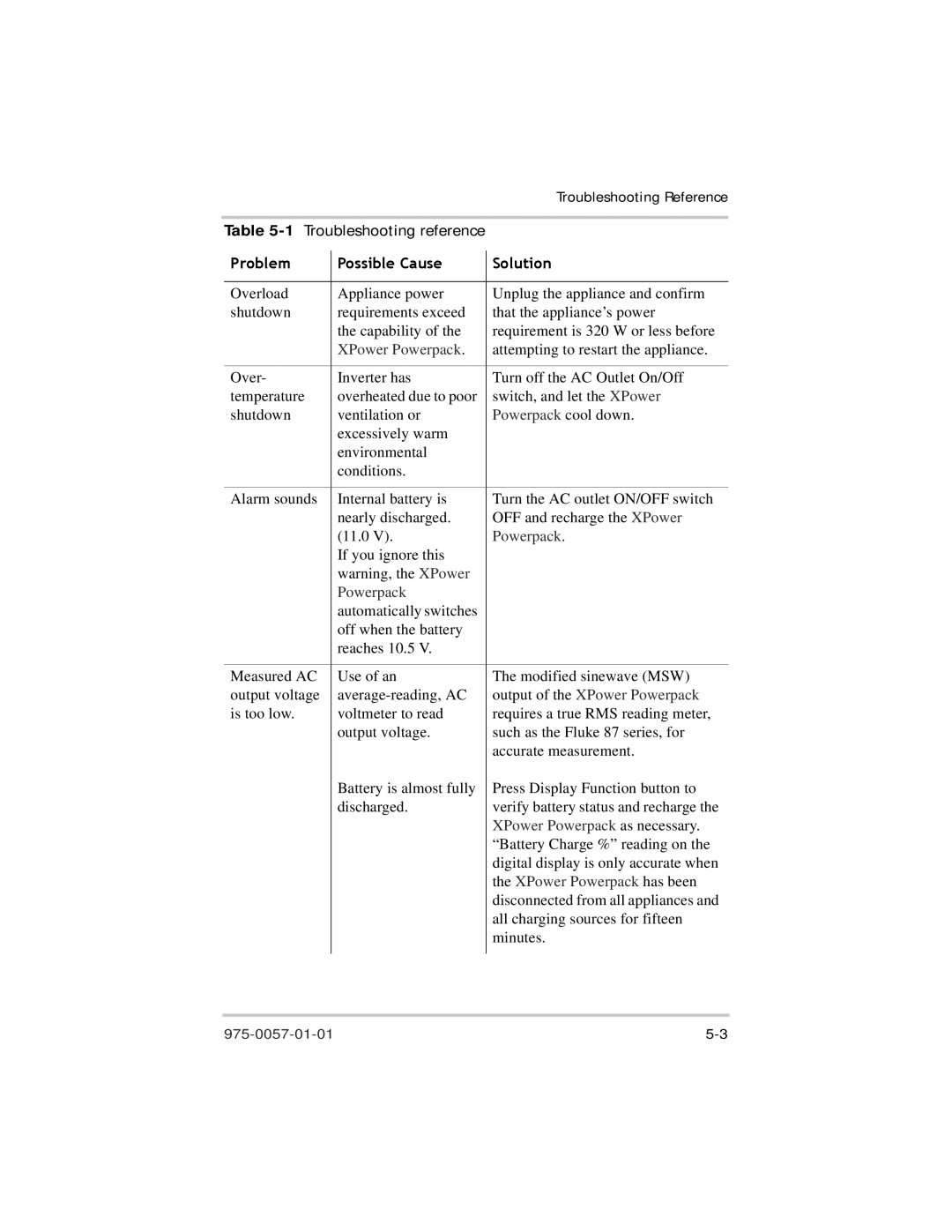
Troubleshooting Reference
Table 5-1 Troubleshooting reference
|
|
|
ProblemPossibleCause | Solution | |
Overload | Appl ance pow r | Unplug the appliance and confirm |
shutdown | requirements exceed | that the appliance’s power |
| the capability of the | req irement is 320 W or less before |
| XPower Powerpack. | attempti g to restart the appliance. |
Over- | Inverter has | Turn off the AC Outlet On/Off |
temperature | overheated d to poor | switch, and let the XPower |
shutdown | ventilation or | P werpack cool down. |
| excessiv ly warm |
|
| environmental |
|
| c nd tions. |
|
|
|
|
Alarm sounds | Internal battery is | Turn he AC outlet ON/OFF switch |
| nearly disch rg d. | OFF and recharge the XPower |
| (11.0 V). | P werpack. |
| If you ignore this |
|
| warn ng, the XPower |
|
| werpack |
|
| automatically switches |
|
| off when the battery |
|
| reaches 10.5 V. |
|
|
|
|
Measured AC | Use of an | The modified sinewave (MSW) |
output voltage | output of the XPower Powerpack | |
is too low. | voltmeter to read | requires a true RMS reading meter, |
| output voltage. | such as the Fluke 87 series, for |
|
| accurate measurement. |
| Battery is almost fully | Press Display Function button to |
| discharged. | verify battery status and recharge the |
|
| XPower Powerpack as necessary. |
|
| “Battery Charge %” reading on the |
|
| digital display is only accurate when |
|
| the XPower Powerpack has been |
|
| disconnected from all appliances and |
|
| all charging sources for fifteen |
|
| minutes. |
|
|
|
|
